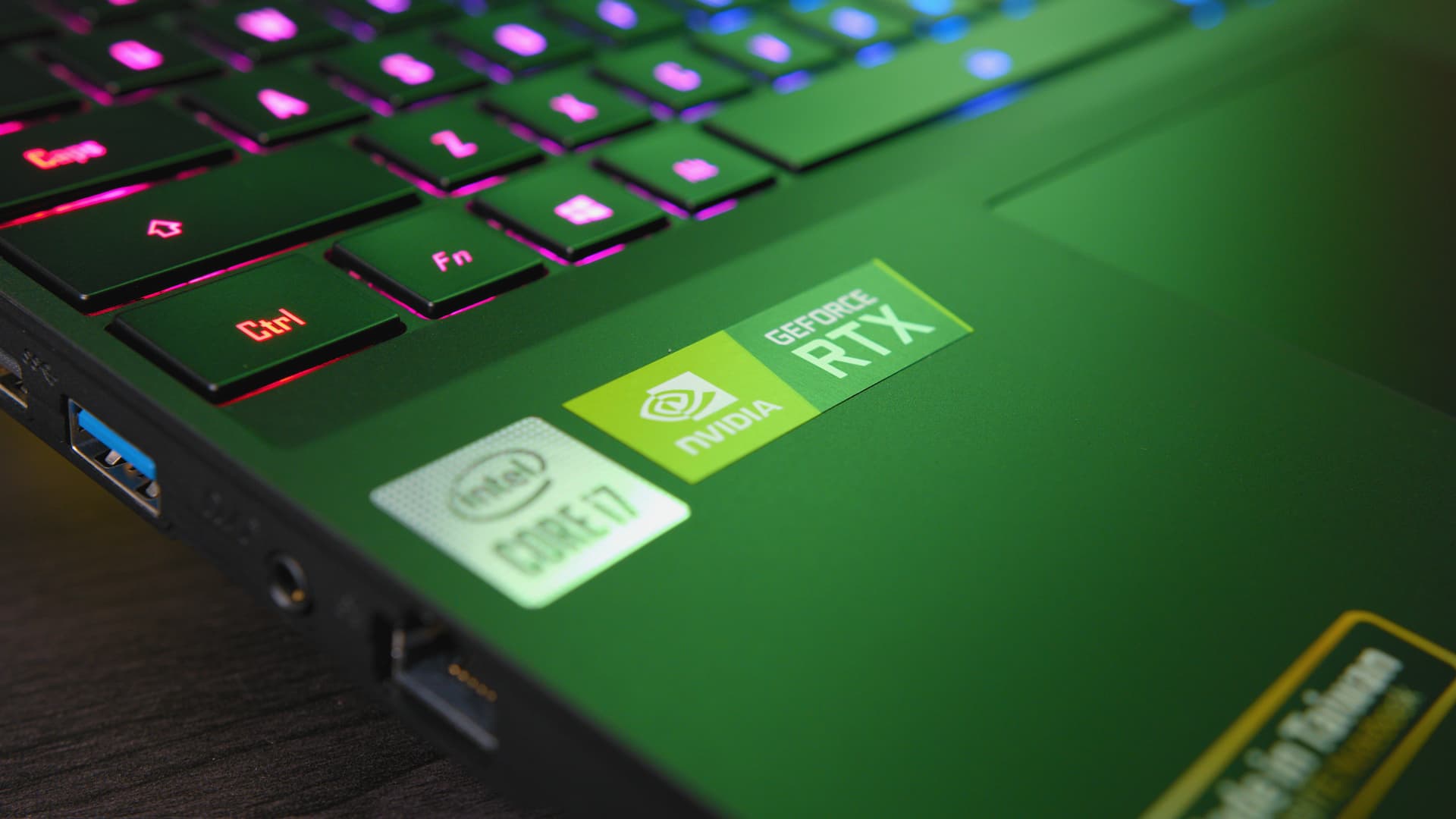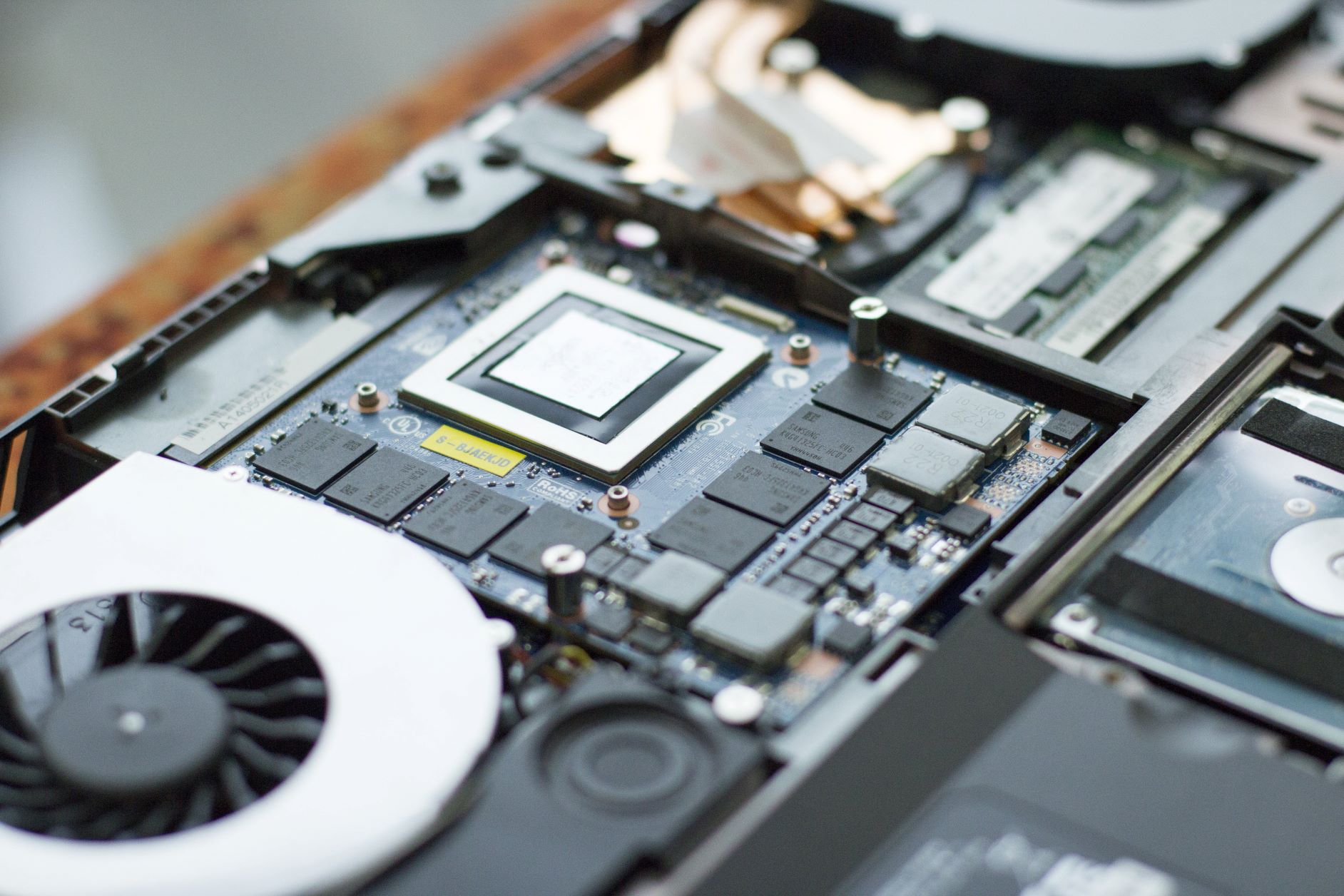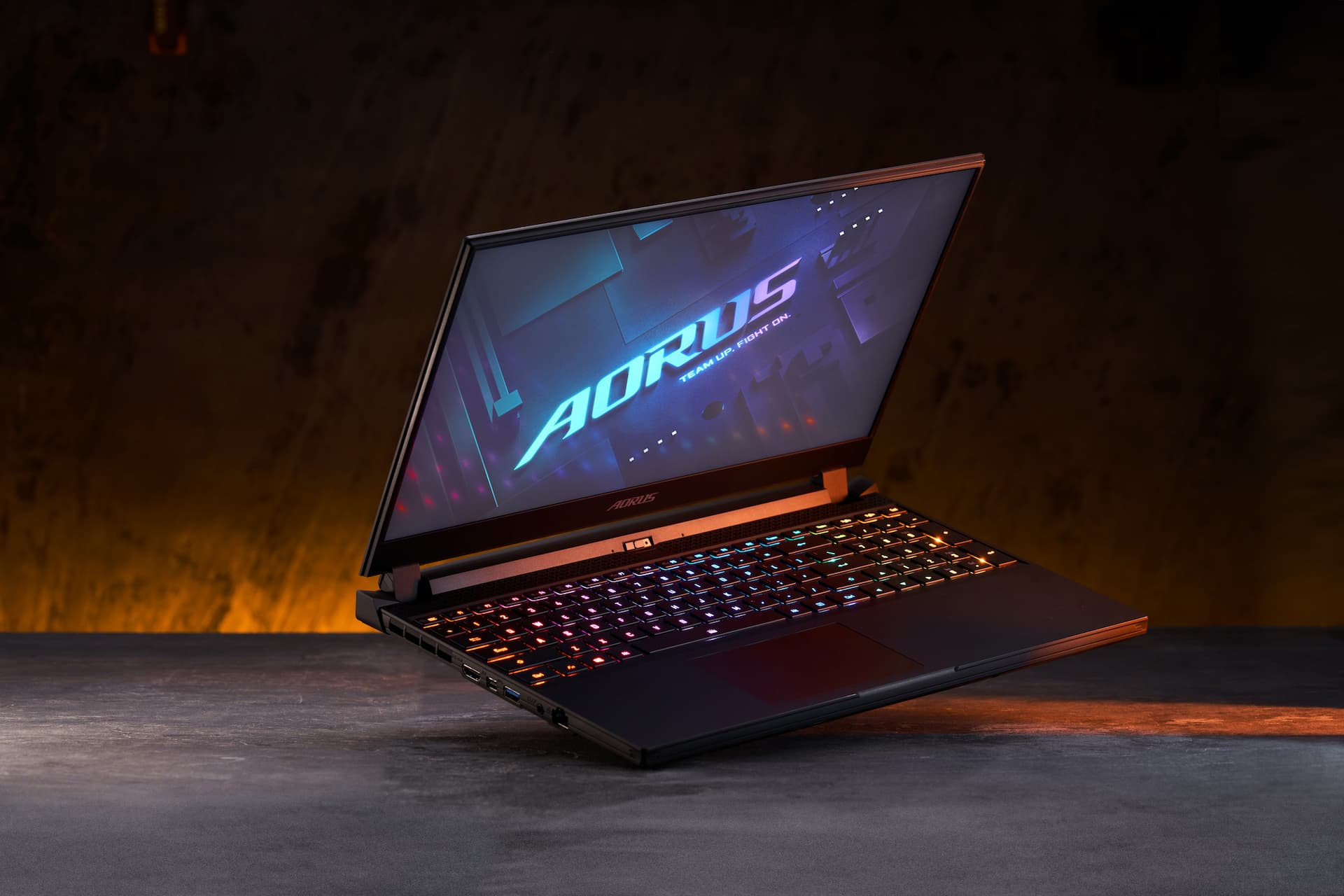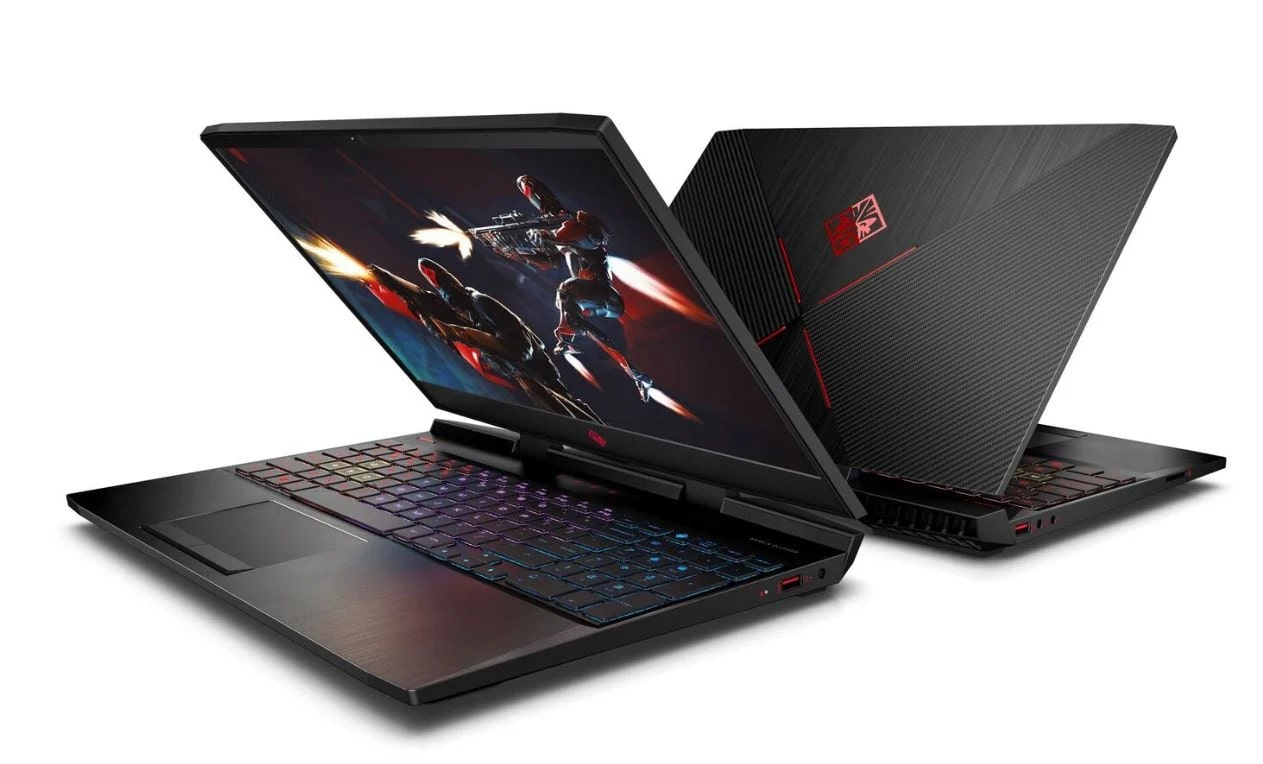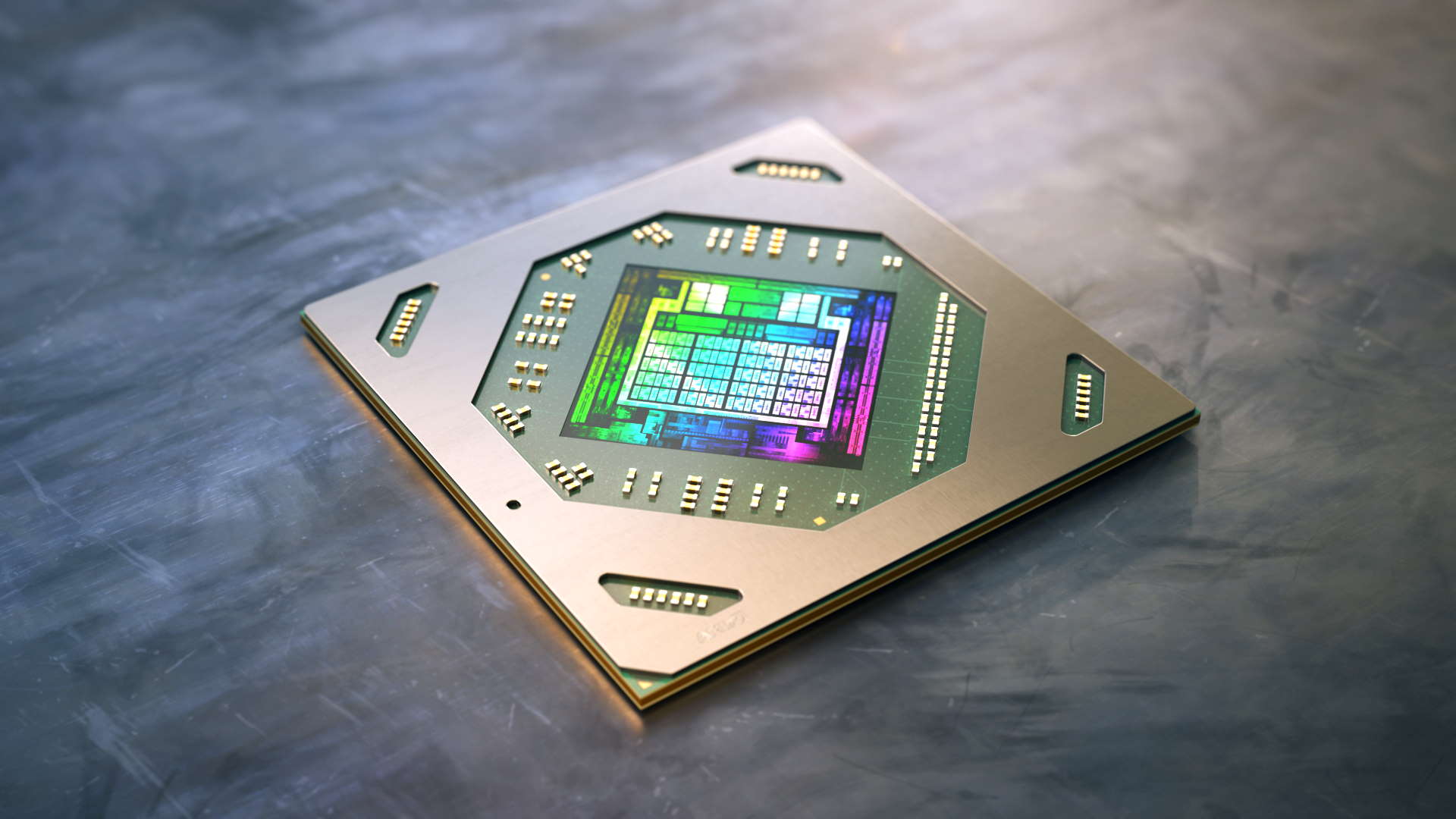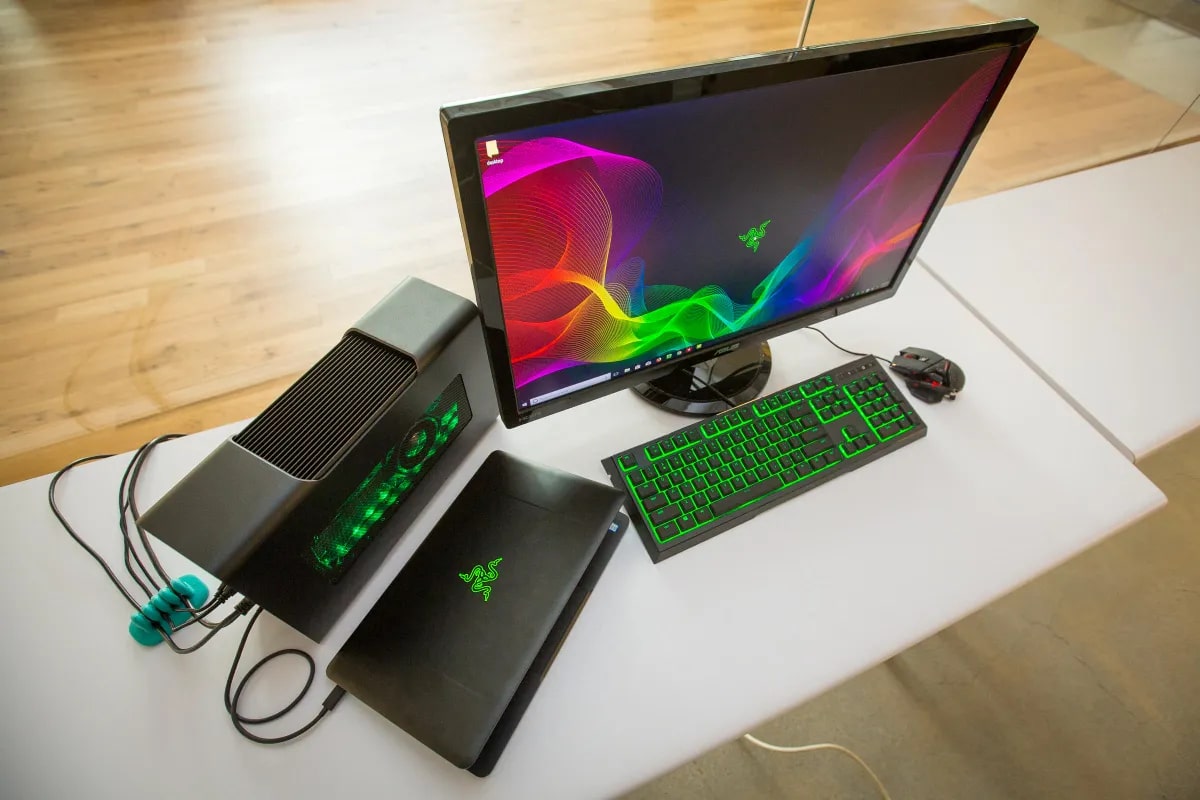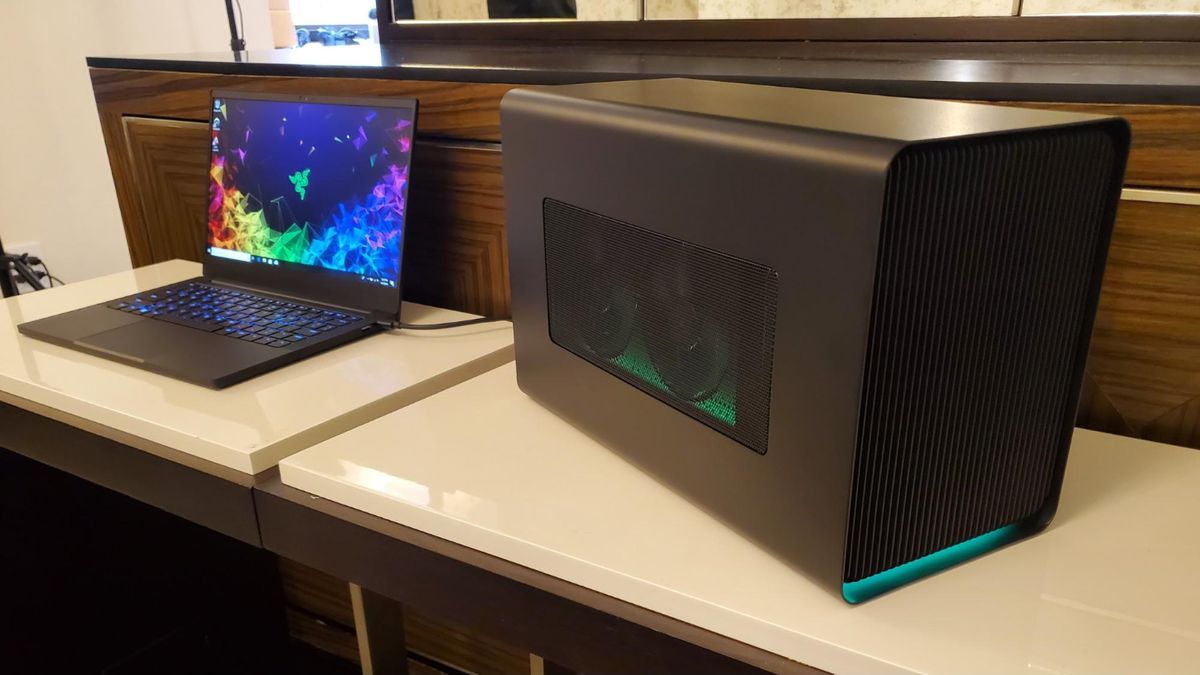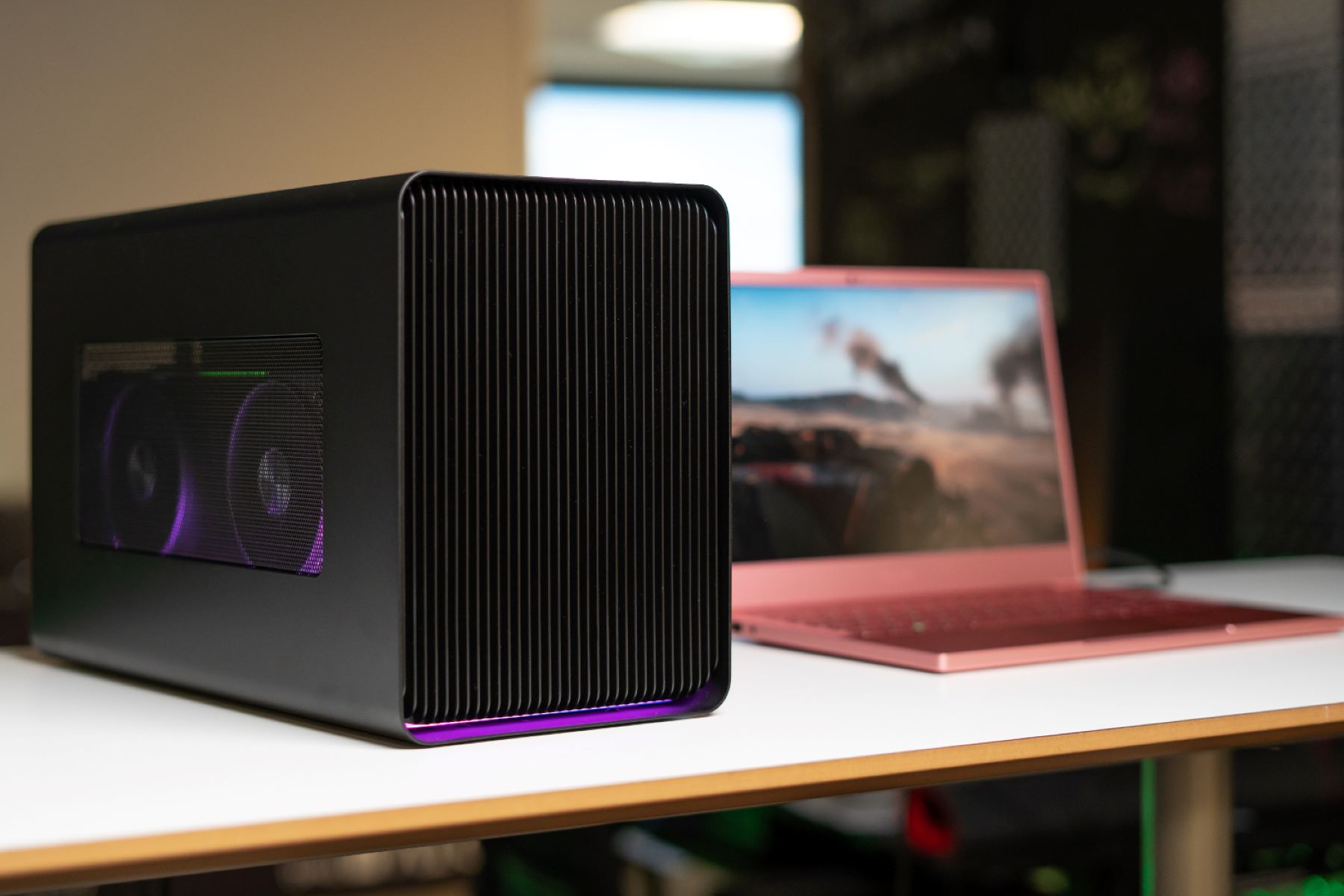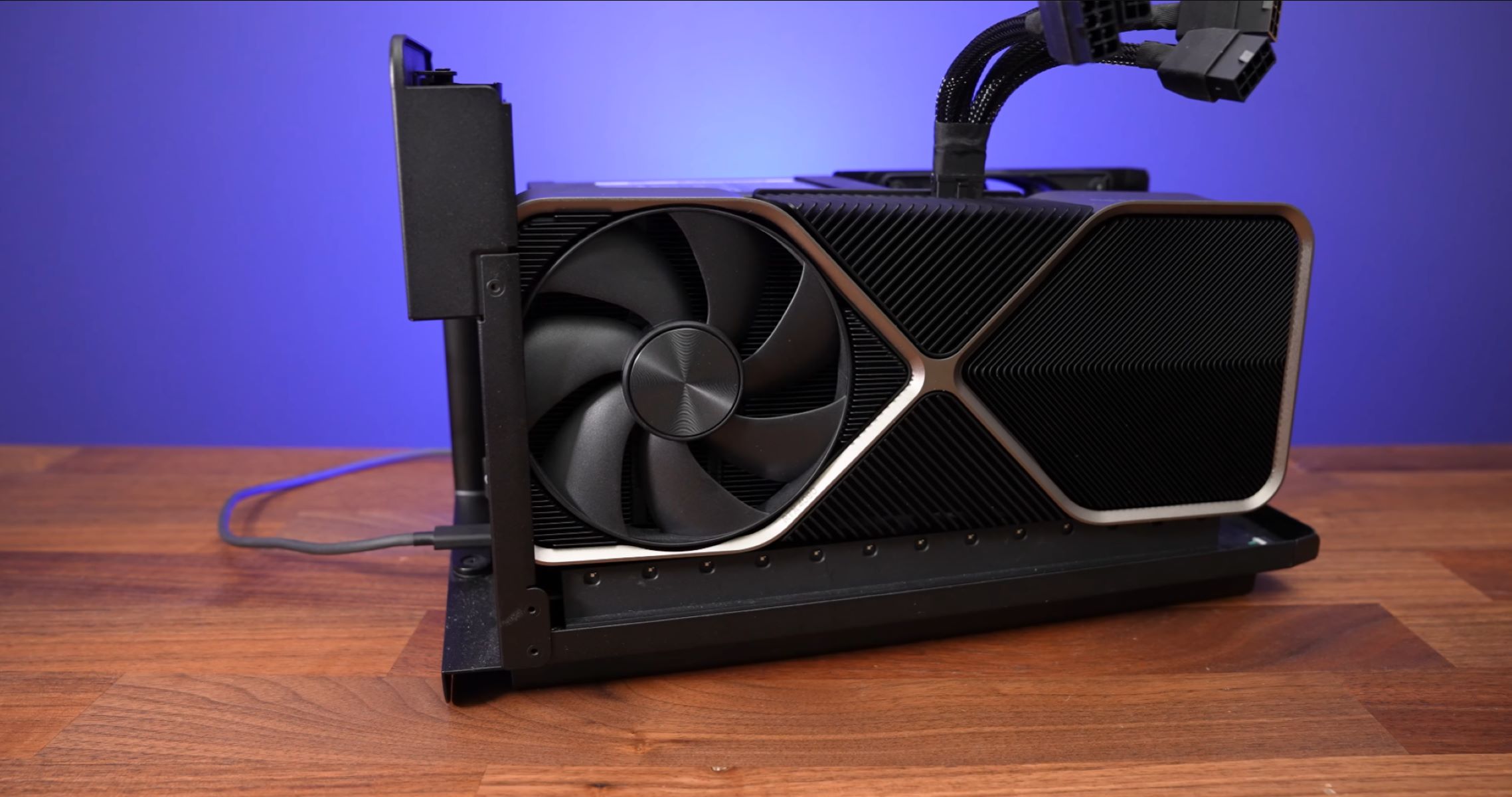Introduction
Welcome to the world of laptops, where a multitude of amazing features are packed into a compact and portable device. One such key component that plays a crucial role in enhancing the visual experience is the graphics card.
Graphics cards, also known as video cards or GPUs (Graphics Processing Units), are responsible for rendering and displaying images, videos, and animations on your laptop screen. They play a vital role in delivering smooth and high-quality graphics, making your gaming sessions more immersive and your multimedia viewing experience more enjoyable.
When it comes to laptops, it’s essential to have a dedicated graphics card to handle the demanding visual tasks. However, finding where the graphics card is located in a laptop can be a bit tricky, as it varies depending on the laptop model and manufacturer.
In this article, we will explore the different locations where you might find the graphics card in a laptop. Whether it’s a dedicated graphics card, an integrated graphics card, or an external graphics card, we will guide you through the process of identifying and understanding the role of each type of graphics card in your laptop.
So, if you’ve ever wondered where the graphics card is hiding in your laptop, buckle up and let’s dive in to unravel this mystery!
What is a Graphics Card?
A graphics card, also known as a video card or GPU (Graphics Processing Unit), is a specialized hardware component that is responsible for rendering and displaying visual information on your computer or laptop screen. It is primarily used to process and generate images, videos, and animations in real-time, providing you with smooth and high-quality graphics.
Graphics cards are equipped with their own dedicated memory, known as VRAM (Video Random Access Memory), which stores graphical data and textures. This allows the graphics card to quickly access and process the visual information, resulting in faster rendering times and improved overall performance.
One of the key components of a graphics card is the GPU, which is a specialized processor designed to handle complex mathematical calculations related to graphics rendering. The GPU is responsible for executing tasks such as geometry processing, pixel rendering, texture mapping, shading, and more.
Graphics cards can vary in terms of their specifications, performance capabilities, and compatibility. Some graphics cards are designed for basic tasks like web browsing and video playback, while others are built for heavy-duty gaming or professional graphics-intensive tasks like video editing or 3D rendering.
In recent years, there has been a significant advancement in graphics card technology, with manufacturers constantly pushing the boundaries to deliver more powerful and efficient GPUs. This has led to a rise in innovations such as ray tracing, which simulates the behavior of light in real-time, resulting in more realistic and immersive graphics.
Overall, the graphics card is a vital component for any computer or laptop, especially for those engaging in graphic-intensive activities such as gaming, graphic design, or video editing. It significantly enhances the visual experience by delivering stunning and lifelike graphics, making your every digital interaction more captivating and enjoyable.
Why do Laptops Have Graphics Cards?
Laptops have graphics cards for several reasons, with the primary purpose being to deliver smooth and high-quality graphics for various activities such as gaming, multimedia consumption, and graphic-intensive tasks. Here are the key reasons why laptops have graphics cards:
- Enhanced Visual Experience: Graphics cards are crucial for delivering stunning and lifelike visuals on a laptop screen. Whether you’re gaming, watching movies, or editing photos and videos, a dedicated graphics card provides smoother animations, vibrant colors, and sharper details, contributing to a more immersive and enjoyable visual experience.
- Smooth Gaming Performance: Gaming is one of the most demanding tasks for a laptop’s hardware, and a powerful graphics card is essential for delivering optimal gaming performance. A dedicated graphics card ensures that complex game environments, character animations, and special effects are rendered smoothly and quickly, without lag or frame rate drops.
- Improved Multimedia Capabilities: Many modern laptops now offer features like 4K displays, HDR support, and high-refresh-rate screens. To fully utilize these advanced capabilities, a graphics card is necessary. It allows you to enjoy high-resolution videos, HDR content, and seamlessly handle graphics-intensive multimedia applications like video editing or 3D modeling.
- Accelerated Processing: Graphics cards not only handle visual tasks but also offload some of the workload from the CPU (Central Processing Unit). This results in improved overall system performance, as the CPU can focus on other tasks while the graphics card efficiently handles rendering and processing graphics-related calculations.
- Multi-Monitor Support: For those who require multiple displays for work or gaming, a graphics card provides the necessary support for connecting and driving multiple monitors simultaneously. This enables you to extend your desktop, increase productivity, or enjoy a panoramic gaming experience across multiple screens.
Overall, graphics cards are an essential component in laptops as they significantly enhance the visual experience, deliver smooth gaming performance, provide support for advanced multimedia features, accelerate processing, and enable multi-monitor setups. Whether you’re a gamer, content creator, or simply someone who appreciates stunning visuals, a laptop with a dedicated graphics card is a must-have for optimal performance and enjoyment.
Integrated vs. Discrete Graphics Cards
When it comes to graphics cards in laptops, there are two main types: integrated and discrete. Understanding the differences between these two types is crucial in determining the performance and capabilities of your laptop’s graphics. Let’s take a closer look at integrated and discrete graphics cards:
Integrated Graphics Cards:
An integrated graphics card, also known as an onboard or shared graphics card, is built directly into the laptop’s motherboard. It shares system memory with the CPU, using a portion of the RAM (Random Access Memory) for graphical tasks. Integrated graphics cards are commonly found in entry-level laptops and are designed for basic computing tasks like web browsing, word processing, and watching videos. They are generally less powerful and have limited capabilities compared to discrete graphics cards.
One of the advantages of integrated graphics cards is that they consume less power, resulting in longer battery life. Since they are integrated into the motherboard, laptops with integrated graphics cards tend to be thinner and lighter. They are also more cost-effective, making them a popular choice for budget-conscious users who don’t require intensive graphics performance.
Discrete Graphics Cards:
A discrete graphics card, also known as a dedicated graphics card or a discrete GPU, is a separate component that is not integrated into the motherboard. It has its own dedicated memory and processing power, providing considerably better graphics performance compared to integrated graphics cards.
Discrete graphics cards are designed for demanding tasks such as gaming, 3D rendering, and video editing. They offer higher frame rates, smoother gameplay, and the ability to run graphically intensive applications with ease. Discrete graphics cards have their own dedicated cooling system, allowing them to handle high power consumption and dissipate heat more effectively.
One notable advantage of discrete graphics cards is their ability to support multiple monitors and higher resolutions. They offer more video memory, which allows for better texture and detail rendering in games and other graphics-intensive applications.
However, it’s important to note that laptops with discrete graphics cards are generally more expensive than those with integrated graphics. They also consume more power, resulting in decreased battery life and potential heat generation.
Ultimately, the choice between integrated and discrete graphics cards depends on your specific needs and usage requirements. If you primarily use your laptop for basic tasks like web browsing and streaming, an integrated graphics card may be sufficient. On the other hand, if you’re a gamer, content creator, or require intensive graphics performance, a laptop with a discrete graphics card is the way to go.
So, Where is the Graphics Card in a Laptop?
Now that we understand the different types of graphics cards in laptops, you might be wondering where they are located within the device. The location of the graphics card can vary depending on the laptop model and manufacturer. Let’s explore the possible locations:
Location 1: Dedicated Graphics Card
In laptops with a dedicated graphics card, also known as a discrete graphics card, the graphics card is typically located in a dedicated slot or compartment within the laptop’s chassis. This slot is separate from the motherboard and often has a cover or panel that can be removed for access. In some cases, the dedicated graphics card may be accessible from the bottom of the laptop, requiring you to remove a few screws or a specific panel to reach it.
Location 2: Integrated Graphics Card
Integrated graphics cards, also called onboard or shared graphics cards, are built into the laptop’s motherboard. In this case, you won’t find a separate slot or compartment dedicated solely to the graphics card. The integrated graphics card shares the system memory with the CPU and utilizes a portion of the RAM for graphical tasks. It is important to note that integrated graphics cards cannot be physically accessed or upgraded as they are integrated directly into the motherboard.
Location 3: External Graphics Card
In some cases, especially with gaming laptops or high-performance laptops, you may find the option to connect an external graphics card. External graphics cards, also known as eGPUs, are housed in an external enclosure and can be connected to the laptop via a compatible port such as Thunderbolt 3. This allows you to enjoy the power of a dedicated graphics card when needed, giving your laptop a significant boost in graphics performance. The external graphics card unit can be placed on your desk or carried along for portable gaming or graphics-intensive tasks.
It’s essential to consult your laptop’s user manual or do some research specific to your laptop model to determine the exact location of the graphics card. Each laptop manufacturer may have their own design and placement choices, so it’s always helpful to refer to the manufacturer’s documentation.
Identifying the location of the graphics card in your laptop is important if you wish to upgrade or troubleshoot any graphics-related issues. However, it’s worth noting that not all laptops allow for graphics card upgrades, especially those with integrated graphics. Before attempting any upgrades or modifications, it’s advised to consult the laptop manufacturer’s guidelines and recommendations.
In the next section, we will discuss how you can identify the type and location of the graphics card in your laptop to ensure you have the necessary information at hand.
Different Locations for Graphics Cards in Laptops
Graphics cards in laptops can be found in various locations, depending on the laptop’s design and architecture. Let’s explore the different possible locations for graphics cards in laptops:
Location 1: Dedicated Graphics Card Slot
Some laptops have a dedicated slot or compartment specifically designed to house the graphics card. This slot is separate from the laptop’s motherboard and is usually accessible by removing a panel or cover. These laptops typically feature a removable or upgradeable graphics card, allowing users to replace or upgrade the graphics card for improved performance. The dedicated slot provides better airflow and cooling for the graphics card, as it is separate from other components within the laptop’s chassis.
Location 2: MXM Graphics Module
In certain high-end gaming laptops or mobile workstations, you may find a graphics card in the form of an MXM (Mobile PCI Express Module) module. These MXM modules are designed to be easily upgradeable and replaceable. They come in different sizes, such as MXM-A, MXM-B, or MXM-III, and can be inserted into a dedicated slot on the motherboard or within a compartment that can be accessed by removing a panel. MXM graphics cards offer a higher level of flexibility and customization, allowing users to upgrade their graphics performance as needed.
Location 3: Integrated Graphics on the CPU
Many laptops, especially those with ultrabook or thin-and-light designs, utilize integrated graphics that are embedded within the CPU itself. These integrated GPUs, such as Intel’s Integrated UHD Graphics or AMD’s Radeon Vega Graphics, share system memory with the CPU and do not have a separate physical location within the laptop. They are not upgradeable or replaceable, as they are integrated directly into the processor package.
Location 4: External Graphics Card via Thunderbolt 3
Some laptops offer the option to connect an external graphics card, typically through a Thunderbolt 3 port. This allows users to harness the power of a full-sized desktop graphics card while using their laptop. The external graphics card enclosure can be placed on a desk and connected to the laptop whenever needed. This setup offers the flexibility to enjoy enhanced graphics performance for gaming or other GPU-intensive tasks, without sacrificing portability.
It is important to note that the presence or absence of a dedicated graphics card slot or MXM module depends on the laptop model and manufacturer. Ultrabooks and lower-end consumer laptops often rely solely on integrated graphics, while gaming laptops and mobile workstations tend to offer dedicated graphics solutions.
Understanding the location and type of graphics card in your laptop is crucial when it comes to upgrading or troubleshooting graphics-related issues. If you’re unsure about the location of the graphics card in your laptop, referring to the manufacturer’s documentation or website can provide you with specific details and guidelines for your laptop model.
In the next section, we will discuss how to identify the type and location of the graphics card in your laptop, so you can ensure you have the correct information at your fingertips.
Location 1: Dedicated Graphics Card
One common location for a graphics card in a laptop is a dedicated slot or compartment specifically designed to house the graphics card. This setup is typically found in gaming laptops or high-performance laptops that offer the option to upgrade or replace the graphics card for improved performance.
Accessing the dedicated graphics card in this location usually involves removing a panel or cover on the bottom or side of the laptop. Some laptops may require removing a few screws or undoing latches to open the dedicated compartment. Always refer to the manufacturer’s documentation or user manual for specific instructions on accessing and upgrading the graphics card in your laptop model.
Once the panel is removed, you will typically find the dedicated graphics card installed in a slot on the motherboard. The graphics card may be secured in place with screws or other fasteners. Depending on the laptop model, there may be additional cooling mechanisms such as heat sinks or fans to ensure optimal thermal performance.
Gaming laptops and mobile workstations often provide more space for ventilation and cooling in this dedicated graphics card setup. The separate compartment allows for better airflow and heat dissipation, which is essential for maintaining optimal performance during graphically demanding activities.
It’s important to note that not all laptops with dedicated graphics card slots have user-upgradable components. Some laptops use proprietary graphics cards that are specific to the manufacturer and cannot be easily replaced or upgraded by the end-user. Always check with the laptop manufacturer or refer to the user manual to determine if your laptop supports upgrades or replacements.
When upgrading or replacing the graphics card in the dedicated slot, it’s crucial to ensure compatibility with your laptop. Check for compatibility in terms of physical size, power requirements, and driver support. Graphics card manufacturers often provide guidelines and recommendations for compatible models that work well with specific laptop brands and models.
Upgrading the graphics card in a laptop’s dedicated slot can offer significant performance benefits for gaming, graphic design, and other graphically intensive tasks. However, it is important to consider the cost and potential limitations of the laptop’s architecture, as not all laptops support graphics card upgrades or may have limited options available.
In summary, laptops with dedicated graphics card slots offer the flexibility to upgrade or replace the graphics card for improved performance. These slots are typically found in gaming laptops or mobile workstations and involve opening a specific compartment or removing a panel to access the graphics card and its associated components. Always refer to the manufacturer’s documentation for specific instructions and compatibility guidelines when working with the dedicated graphics card in your laptop.
Location 2: Integrated Graphics Card
Another common location for a graphics card in a laptop is an integrated graphics solution. Unlike dedicated graphics cards, integrated graphics cards are built directly into the laptop’s motherboard rather than being a separate component. This location is often found in entry-level laptops or ultrabooks that prioritize portability and energy efficiency over high-performance graphics.
Since integrated graphics cards are integrated into the motherboard, they do not have a dedicated slot or compartment like dedicated graphics cards. Instead, they utilize system memory, typically a portion of the laptop’s RAM, for graphical tasks. Integrated graphics cards share the resources and power with the CPU (Central Processing Unit) and other components on the motherboard.
To identify if your laptop has an integrated graphics card, you can check the laptop’s specifications or look for information in the system settings. Popular integrated graphics solutions include Intel’s Integrated UHD Graphics and AMD’s Radeon Graphics, which are commonly found in laptops.
One advantage of integrated graphics cards is their power efficiency, as they consume less energy compared to dedicated graphics cards. This allows laptops with integrated graphics to have longer battery life, making them ideal for tasks that don’t require high-performance graphics, such as web browsing, word processing, or media consumption.
However, the performance of integrated graphics cards is generally lower compared to dedicated graphics cards. They may struggle to handle graphically demanding tasks, such as gaming, video editing, or 3D rendering, with the same level of smoothness and quality as dedicated graphics cards. Integrated graphics cards also have limitations when it comes to multi-monitor setups or running applications that require more video memory.
It’s important to note that integrated graphics cards cannot be upgraded or replaced by the end-user. Since they are integrated into the motherboard, any upgrade to the graphics capability would require replacing the entire motherboard, which is generally not feasible in laptops.
However, technological advancements in integrated graphics have led to improved performance over the years. Modern integrated graphics solutions offer better performance and support for features like 4K video playback and basic gaming. They are suitable for everyday computing tasks and can handle some casual gaming or light graphical applications.
In summary, integrated graphics cards are located directly on the motherboard, sharing system resources and memory with the CPU. They are commonly found in entry-level laptops and ultrabooks, offering power efficiency and cost-effectiveness. While they have limitations in terms of performance and upgradability compared to dedicated graphics cards, modern integrated graphics solutions have improved and can handle everyday tasks and light graphical applications with ease.
Location 3: External Graphics Card
In addition to dedicated and integrated graphics cards, some laptops offer the option to connect an external graphics card, also known as an eGPU (External Graphics Processing Unit). This setup allows users to harness the power of a desktop-level graphics card while using their laptop.
External graphics cards are housed in an external enclosure, which typically connects to the laptop via a compatible port, such as Thunderbolt 3. This allows for high-speed data transfer and power delivery, providing a seamless connection between the laptop and the external graphics card.
The external graphics card enclosure is placed on a desk or another suitable surface, and the laptop is connected to it using a Thunderbolt 3 cable. This setup provides a significant boost in graphics performance, making it ideal for gaming, graphical applications, or any task that requires intensive GPU processing power.
One of the main advantages of using an external graphics card is the ability to upgrade or replace the graphics card as needed. When newer and more powerful graphics cards are released, users can simply replace the graphics card within the external enclosure, offering a convenient way to improve graphics performance without having to purchase a new laptop.
Additionally, utilizing an external graphics card setup allows laptops with lower-end or integrated graphics to achieve desktop-level performance when connected to the enclosure. This is especially beneficial for users who require high-performance graphics for specific tasks but do not want to compromise on the portability and convenience of their laptop.
While an advantage of an external graphics card is the flexibility it provides, it’s important to note that it requires additional equipment and an investment. The external enclosure and the graphics card itself add to the cost and the overall setup takes up additional desk space. Furthermore, the performance of the external graphics card can be affected by the laptop’s CPU, available ports, and the bandwidth limitations of the connection.
Setting up an external graphics card can vary depending on the specific enclosure and the laptop. It typically involves installing the necessary drivers, connecting the enclosure to the laptop, and configuring the graphics settings to ensure the laptop uses the external graphics card for processing tasks.
In summary, the external graphics card option provides laptop users with a flexible and upgradeable solution to enhance graphics performance. It allows laptops to achieve desktop-level graphics capabilities when connected to an external enclosure housing a dedicated graphics card. While this setup requires additional investment and equipment, it provides the convenience of portable computing with the power of a high-performance graphics card.
How to Identify the Type and Location of Graphics Card in a Laptop?
Identifying the type and location of the graphics card in your laptop is essential, as it provides vital information for upgrading, troubleshooting, or understanding the graphics capabilities of your device. Here are some methods to help you identify the type and location of the graphics card in your laptop:
1. Check the Laptop’s Specifications:
The easiest and quickest way to determine the type of graphics card in your laptop is to check the laptop’s specifications. You can find this information on the manufacturer’s website, in the laptop’s user manual, or on the product label/sticker affixed to the laptop. Look for specific details regarding the graphics card, such as the brand (e.g., NVIDIA, AMD, Intel) and the model name or number.
2. System Information:
You can also check the system information of your laptop to gather details about the graphics card. In Windows, you can access the system information by typing “system information” in the search bar and opening the corresponding application. Look for the “Display” or “Graphics” section to find information about the graphics card, including the model name, driver version, and other relevant details.
3. Device Manager:
Another method to identify the graphics card in your laptop is by accessing the Device Manager. In Windows, you can do this by right-clicking on the Start button, selecting “Device Manager,” and expanding the “Display adapters” category. Here, you will find the name of the graphics card installed in your laptop.
4. User Manual and Manufacturer’s Documentation:
Refer to the laptop’s user manual and manufacturer’s documentation for detailed information about the graphics card and its location in your specific laptop model. The user manual often provides step-by-step guides on how to access the graphics card and upgrade or replace it, if supported.
5. Physical Inspection:
If you have a basic understanding of laptop hardware, you can perform a physical inspection to identify the location of the graphics card. Look for removable panels or compartments on the bottom or side of the laptop, which may indicate the presence of a dedicated graphics card slot or access to an integrated graphics solution. Manufacturers may also label or indicate the location of the graphics card on the laptop’s exterior or inside the laptop’s casing.
It’s important to note that not all laptops have user-upgradable graphics cards, especially those with integrated graphics. Certain laptops may have the graphics card soldered onto the motherboard, making it non-removable or non-upgradeable. Always check the laptop’s specifications and documentation to determine if the graphics card is user-accessible and upgradeable.
By utilizing these methods, you can identify both the type and location of the graphics card in your laptop. This knowledge allows for a better understanding of your laptop’s graphics capabilities and potential upgrade options, ensuring you make informed decisions regarding your laptop’s graphical performance.
Conclusion
Understanding the type and location of the graphics card in your laptop is crucial for optimizing your visual experience, whether you’re a gamer, graphic designer, or simply a multimedia enthusiast. Graphics cards play a significant role in delivering smooth and high-quality graphics, enhancing your overall computing experience.
In this article, we explored different types and locations of graphics cards in laptops. We discussed the differences between integrated and discrete graphics cards, highlighting their respective advantages and limitations. Integrated graphics cards are built into the motherboard, providing power efficiency and cost-effectiveness, while discrete graphics cards offer higher performance and the possibility of upgrades. We also explored the option of external graphics cards, which provide desktop-level graphics capabilities through an external enclosure.
Identifying the type and location of the graphics card in your laptop is essential for upgrading, troubleshooting, or understanding the capabilities of your device. We provided methods to help you identify the graphics card, such as checking the laptop’s specifications, accessing system information and the Device Manager, consulting the user manual and manufacturer’s documentation, and performing a physical inspection.
Remember, not all laptops offer user-accessible or upgradeable graphics cards. Integrated graphics cards are often non-upgradable as they are soldered onto the motherboard. It’s important to research and verify the specifics of your laptop model before attempting any upgrades or modifications.
Whether you have a dedicated graphics card in a specific slot or compartment, an integrated graphics card within the motherboard, or the ability to connect an external graphics card, understanding your laptop’s graphics configuration empowers you to make informed decisions based on your specific needs and usage requirements.
So, whether you’re seeking top-notch gaming performance, enhanced multimedia capabilities, or the ability to handle demanding graphics-intensive tasks, knowing the type and location of the graphics card in your laptop is a vital piece of knowledge. It allows you to unleash the full potential of your laptop’s graphics capabilities and elevate your visual experience to new heights.







